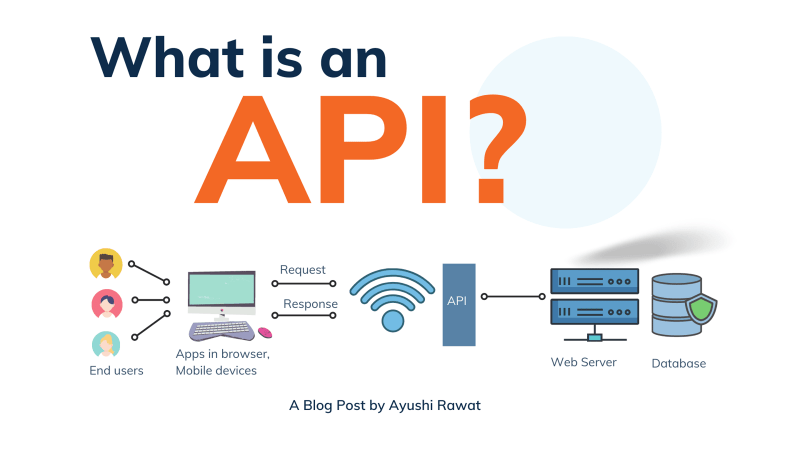OpenWeatherMap: Unlocking Weather Insights for Developers and Businesses
When it comes to weather forecasting and data services, OpenWeatherMap has become a prominent name, offering reliable and affordable weather data through powerful APIs. Established in 2014, the company provides access to real-time weather updates, forecasts, historical data, and environmental monitoring. Its services cater to a wide array of industries, including logistics, agriculture, app development, and IoT integration.
This article explores what OpenWeatherMap is, how it can be used, and evaluates its pros and cons.

image source: link
What Is OpenWeatherMap?
OpenWeatherMap is an online weather service that aggregates meteorological data from thousands of weather stations, satellites, and official sources worldwide. The company provides its data through Application Programming Interfaces (APIs), making it easy for developers to integrate weather data into their applications, websites, and systems.
Unlike traditional weather platforms that offer limited access to data, OpenWeatherMap democratizes weather intelligence with free and paid plans. It supports both simple apps and complex business use cases.
How Can OpenWeatherMap Be Used?
OpenWeatherMap’s APIs have applications across multiple sectors. Below are the most common use cases:
1. Logistics: Ensuring Timely Deliveries
Reliable weather forecasts are essential for logistics companies to optimize delivery routes and ensure safety. By integrating OpenWeatherMap’s APIs, businesses can receive hourly and daily forecasts, precipitation alerts, and temperature data, helping them plan routes efficiently and avoid weather-related delays.
2. Agriculture: Protecting and Maximizing Crop Yield
Farmers and agricultural organizations rely on weather, soil, and moisture conditions to plan irrigation, planting schedules, and crop protection measures. OpenWeatherMap’s agriculture-specific APIs provide valuable insights that help reduce the impact of extreme weather events and improve crop productivity.
3. Smart Cities and IoT Devices
In smart city infrastructure, weather data is crucial for managing public safety, traffic control, and energy consumption. OpenWeatherMap’s APIs help IoT-enabled devices, such as smart thermostats and home automation systems, optimize energy use by adjusting settings based on current weather conditions.
4. Mobile and Web Applications
Developers frequently use OpenWeatherMap to build weather apps, dashboards, and widgets. The APIs provide current conditions, 5- to 16-day forecasts, and severe weather alerts, making them ideal for consumer-facing weather applications.
5. Renewable Energy Planning
Solar and wind energy companies use OpenWeatherMap’s cloud cover and wind speed data to predict energy generation and optimize output. Accurate weather information allows for better power grid management and energy storage decisions.
Key APIs and Features of OpenWeatherMap
OpenWeatherMap offers several APIs tailored to meet different needs:
- Current Weather API: Real-time weather conditions, including temperature, humidity, and wind speed.
- One Call API: Combines multiple data types, providing current weather, forecasts, and historical data in a single API.
- Historical Weather API: Access archived weather data for past events and analysis.
- Air Pollution API: Monitors air quality and pollution levels.
- Weather Alerts API: Sends alerts for extreme weather events such as storms, heatwaves, and floods.
These APIs provide flexibility, allowing developers and businesses to retrieve specific data for their applications.
Pros of OpenWeatherMap
- Global Coverage: With data collected from thousands of weather stations, OpenWeatherMap offers coverage for both urban and rural regions worldwide.
- Affordable Pricing: The platform offers free plans for small projects and scalable paid plans for businesses with higher data requirements.
- Developer-Friendly: The APIs are well-documented, making it easy for developers to integrate and customize data retrieval.
- Comprehensive Data Sets: Users can access a variety of data points, including current weather, forecasts, air pollution, and historical weather.
- Frequent Updates: OpenWeatherMap updates its weather data regularly, providing users with real-time or near-real-time information.
Cons of OpenWeatherMap
- Limited Accuracy in Remote Areas: In regions with fewer weather stations, the data may be less accurate compared to services that rely on dense, localized networks.
- Free Plan Limitations: The free plan has restrictions on API call frequency and data types, which may not be sufficient for larger or high-demand applications.
- Customer Support: Some users report that response times for technical support could be improved, particularly for free-tier users.
- Data Latency in Extreme Events: During severe weather events, some users may experience slight delays in receiving the most up-to-date information.
OpenWeatherMap vs. Competitors
OpenWeatherMap competes with other weather data providers such as The Weather Company (IBM), AccuWeather, and Weather Underground. Here’s how it compares:
- Strengths: OpenWeatherMap stands out for its affordability, global coverage, and API accessibility, making it ideal for startups and mid-sized businesses.
- Weaknesses: For highly specialized or mission-critical applications (such as aviation-specific forecasts and turbulence monitoring), competitors like The Weather Company may offer more precise data.
Is OpenWeatherMap Right for You?
OpenWeatherMap is an excellent choice for businesses and developers seeking cost-effective, flexible weather solutions. It’s particularly suitable for app developers, smart city planners, logistics companies, and renewable energy providers. For businesses that require precise, localized data, comparing it with premium providers might be necessary.
Final Thoughts: A Versatile Weather Data Platform
OpenWeatherMap has carved a niche by offering a broad range of weather data services at competitive prices. Its combination of global reach, developer-friendly APIs, and flexible plans makes it a top choice for both small-scale projects and large enterprises.
If you’re looking to integrate real-time weather updates, forecasts, or air quality data into your system, OpenWeatherMap is worth exploring. Visit their official website to learn more about their plans and features.
Recommended article: Value Stream Mapping (VSM) and Its Relevance to Airline Operations


